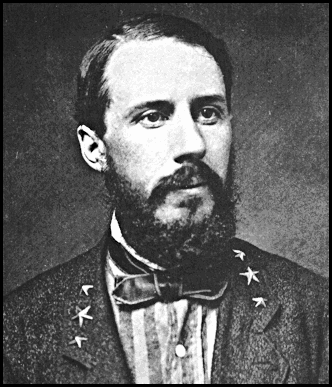Chapter Five: Riding The Winds of Battle
The "Silk Dress Balloon"
 |
|
Edwin Porter Alexander
|
The Confederates also tried to use observation balloons during the Peninsular Campaign. But they had far fewer resources than the Northerners and they seemed to have less luck. In April and May of 1862 Captain John Randolph Bryan went aloft in a makeshift hot-air balloon tethered to the ground by a single rope. On one ascension, the rope snapped and Bryan's balloon rocketed several thousand feet up into the air. After drifting back and forth across the lines, being shot at by Confederate troops, and nearly landing in the water, Bryan returned to earth behind his own lines and managed to make a report to his commanding officer. The Confederates also tried to use town gas to lift a balloon. Silk was often used as balloon fabric, because it was lightweight and tightly woven enough that, when properly treated, it could hold in lifting gas. The Confederate balloon, the Gazelle, was made out of bolts of silk of the sort used for women's dresses. The bolts happened to be several different colors. From this sprang the myth that Confederate balloons were made from actual silk dresses donated to the cause by patriotic Confederate ladies. But there was only one Confederate lifting-gas balloon definitely known to exist, and it wasn't made from dresses. This multi-colored balloon provided some useful observations for the Confederates during the Peninsular Campaign. Lieutenant Colonel Edward Porter Alexander, who had helped develop the "wigwag" signaling system the Confederates successfully used at Manassas, flew repeatedly in the Gazelle. However, his attempts to fly the balloon off the ship C.S.S. Teaser, in the James River, ended in disaster on July 4, 1862 when the Teaser was hit by fiire from the U.S.S. Maratanza, ran aground and was captured, balloon and all. That ended serious Confederate attempts to use observation balloons.
After the war, Alexander wrote "I have never understood why the enemy abandoned the use of military balloons early in 1863, after having used them extensively up to that time. Even if the observers never saw anything, they would have been worth all they cost for the annoyance and delays they caused us in trying to keep our movements out of their sight." In war, anything that keeps your enemy from doing what he wants is of value, even if it has no other direct benefit to your side.

